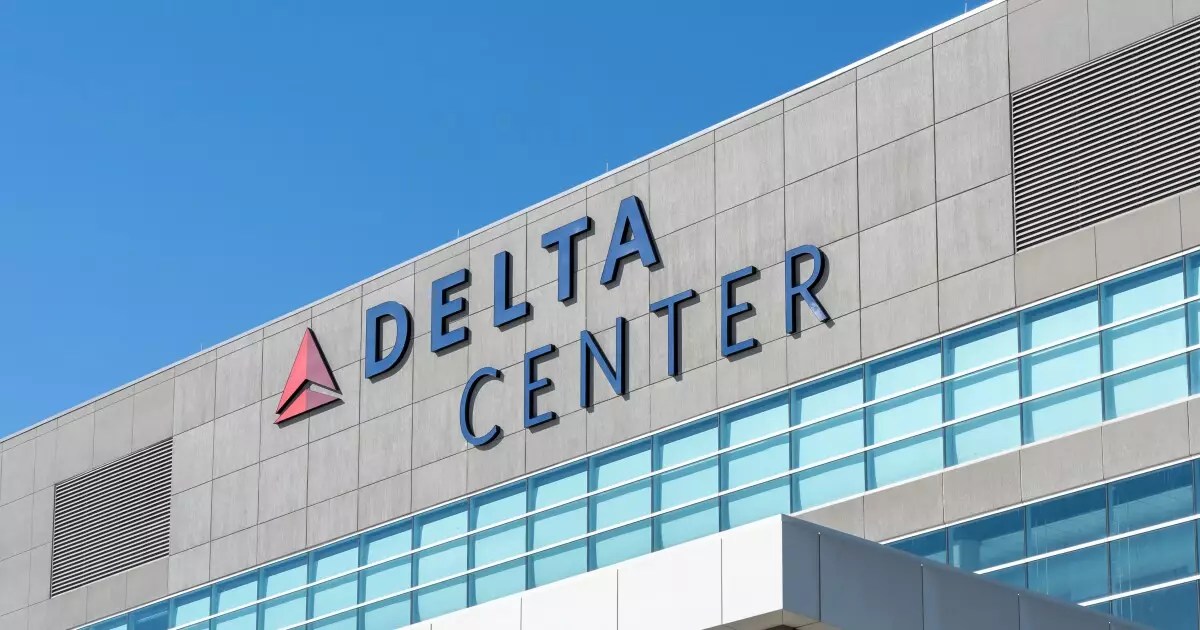In an audacious move indicative of ambitious city planning, Salt Lake City is stepping into the municipal bond market with a staggering $900 million sales tax revenue bond issuance aimed at revitalizing its downtown and renovating the Delta Center. This sports arena, recently acquired by the Smith Entertainment Group, serves a dual purpose: it will host both the NBA’s Utah Jazz and the NHL’s Utah Mammoth, representing a critical pivot for the local economy. With the bonds exempt from federal and Utah state income taxes, they might seem like a golden opportunity. However, beneath this shiny surface lies an intricate web of financial risks that could significantly impact taxpayers and the region’s fiscal health.
The bond’s setup, facilitated by a recent Utah law allowing such debt issuance specifically for arena improvements, was ratified by a city council decision. By instituting a temporary half-percent increase in the sales tax—projected to yield approximately $1.2 billion over three decades—the city is banking not only on the economic benefits of these sporting events but also on their long-term sustainability. This reliance on sales tax growth represents a gamble that could falter if consumer spending dwindles or if the cities housing these professional teams suffer from volatile markets or relocations.
Flawed Assumptions and Potential Pitfalls
While proponents of the bond issuance herald it as a pivotal step toward rejuvenating downtown Salt Lake City, critics should closely examine the assumptions underlying the expected revenue generation. For example, municipal strategist Pat Luby of CreditSights cautions that any fallout from the loss of a franchise—whether through relocation or underperformance—could have dire consequences for the area. The center’s capacity to draw in crowds and generate incremental spending could be significantly hampered.
It begs the question: is this $900 million bond truly enough to cover the extensive renovations required for a state-of-the-art multi-sport venue? Or will the city find itself grappling with unforeseen expenses and budget overruns? The bond structure, which includes both first- and second-lien bonds aimed at generating sufficient debt service coverage, relies heavily on a robust local economy—that vitality, however, is not guaranteed. Howard Cure of Evercore Wealth Management has echoed these concerns, stating that there’s an urgent need for clarity around the total cost of improvements.
The Weight of Ratings and Financial Backings
The financial backing has raised eyebrows not only among taxpayers but also among investors. The first-lien bonds, rated A1 by Moody’s, reflect an optimistic outlook based on Salt Lake City’s strong credit profile, yet Moody’s also warns of the precarious nature of such deals. The closed lien structure, while beneficial in some regards, poses a significant risk should the city’s financial health deteriorate or if revenues fail to meet expectations. If the anticipated revenue growth falls short, the consequences could ripple through the community—directly impacting services and infrastructure.
Moreover, Moody’s warning regarding a potential downgrade of Salt Lake City’s rating—should its financial support fall below expected levels—adds another layer of concern. Such a scenario could lead to higher borrowing costs and an eroded investor confidence in future municipal bonds.
A Focus on Short-Term Gains at Taxpayer Expense
When examining the city council’s hasty approval of this bond issuance, one can’t help but view it through a critical lens. The allure of short-term economic gains, bolstered by the excitement surrounding increased sports events, overshadows a more sustainable vision for economic growth. The focus appears fixated on immediate benefits rather than a comprehensive strategy that encompasses community engagement and long-term viability.
Furthermore, the exclusivity surrounding the projects—being tied primarily to sports and entertainment—potentially restricts the city’s diversification efforts in economic development. By channeling substantial taxpayer resources into a silver lining of flashy sports franchises, Salt Lake City risks stifling other crucial sectors that require investment and details.
Funding essential infrastructure, education, and public services remains a pressing challenge. This bond issue will inevitably siphon critical revenue streams away from these areas, raising concerns about the long-term sustainability of community services.
Rethinking Municipal Bond Strategies
The Salt Lake City council must critically assess not only the financial implications of the bond issuance but also the broader societal impact this investment represents. Is constructing a sports mecca worth the price of jeopardizing essential community services? Are we trading public welfare for the transient thrill of sports fandom?
In a world where trust in government spending is waning, Salt Lake City has the opportunity to redefine how it engages with its citizens when financing such high-stakes projects. The question remains: can local leaders balance economic ambition with the realities of sound financial management and comprehensive urban planning? As cities across the nation grapple with similar dilemmas, Salt Lake City’s approach to this bond issuance could serve as a blueprint—or a cautionary tale—for other municipalities navigating the challenging waters of urban revitalization and sustainable financial growth.


Leave a Reply